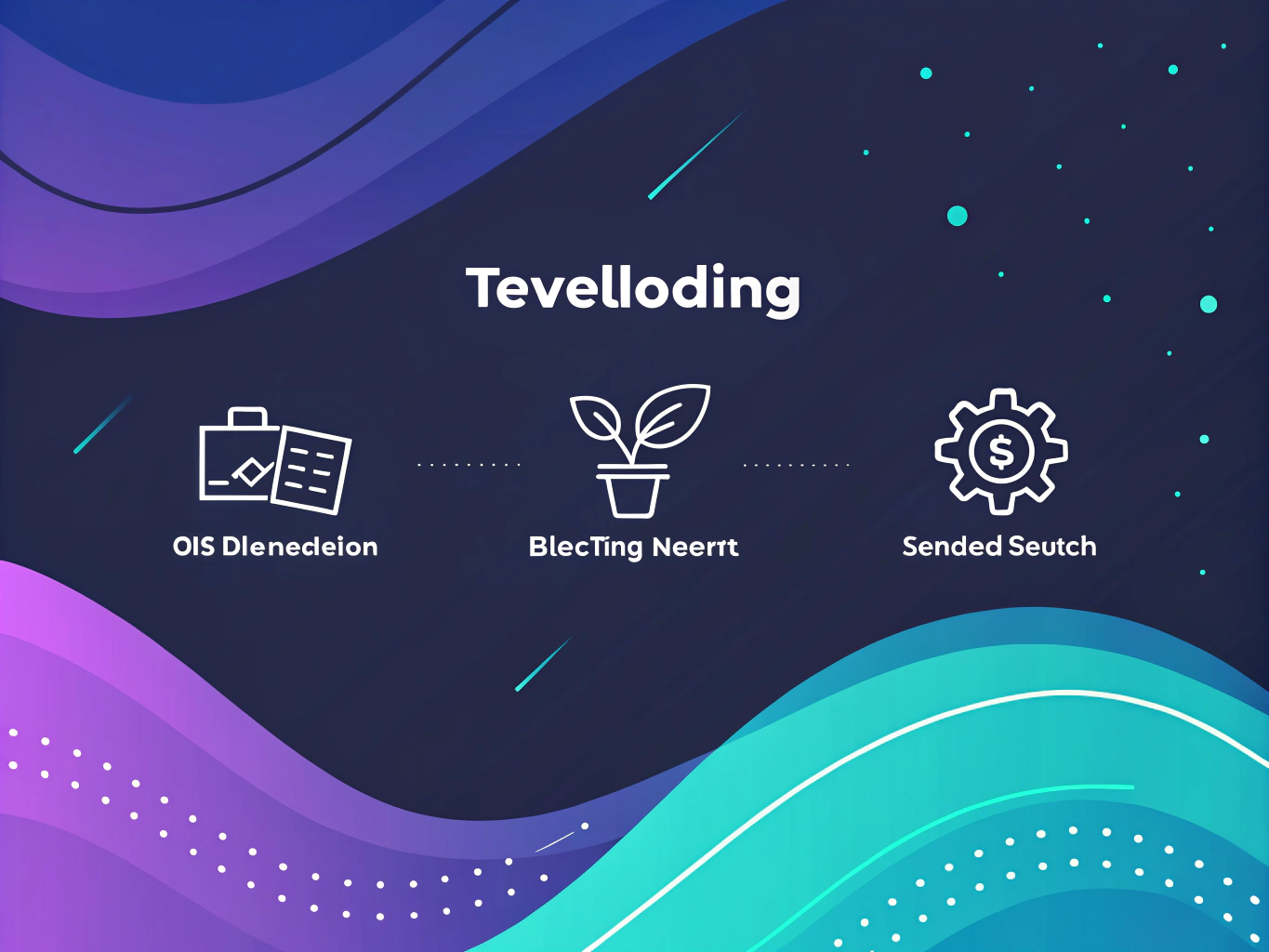The Journey to Building a Successful Etsy Shop Starts Here
Let’s be real – starting and growing an Etsy shop feels a lot like trying to build a spaceship while simultaneously learning rocket science. You’ve got this vision of what you want to create, but the sheer number of moving parts can make your head spin faster than a fidget spinner in 2017.

I’ve spent the last decade helping thousands of creators navigate the complex waters of ecommerce, and if there’s one thing I’ve learned, it’s that success on Etsy isn’t about following some mythical perfect formula – it’s about understanding the platform’s DNA and making it work for your unique business.
Whether you’re just logging into etsy.com for the first time or you’re a seasoned seller looking to level up your game, this guide will walk you through everything you need to know about creating and managing my etsy shop (yes, I’m going to make this feel personal because, hey, your shop IS personal).
Getting Started: Building Your Etsy Shop’s Foundation

Creating Your Shop Profile That Actually Converts
Think of your Etsy shop profile as your digital storefront – except instead of window displays and mood lighting, you’re working with pixels and words. When real people land on your page, you’ve got about 3 seconds to convince them they’re in the right place. No pressure, right?
First things first – head over to etsy login (or etsy seller login if you’re already a member) and navigate to the etsy shop manager. This is going to be your command center, your mission control, your… okay, I’ll stop with the space analogies.
Your shop name is more than just a clever play on words (though those can be fun). It needs to be:
- Memorable but easy to spell
- Relevant to your niche
- Available across social media platforms
- Something you won’t hate saying 1000 times at craft fairs
Setting Up Shop Essentials That Actually Matter
Once you’re in the etsy.com shop manager, you’ll need to set up some basic but crucial elements. Think of these as the foundation of your digital real estate:
- Payment processing (because getting paid is kind of important)
- Tax information (because the IRS doesn’t accept “I forgot” as an excuse)
- Shipping profiles (trust me, you’ll thank yourself later)
- Shop policies (your first line of defense against “but I thought…”)
Optimizing Your Product Listings: The Art and Science
Creating Product Listings That Actually Sell
Here’s where the rubber meets the road. Your product listings are like your sales team – working 24/7 to convert browsers into buyers. And just like any good sales team, they need the right tools and training.
When creating listings through the etsy desktop site login, remember that photos are your virtual handshake. You don’t need a $5000 camera setup (though if you have one, cool!), but you do need:
- Clear, well-lit images that show your product from multiple angles
- At least one lifestyle shot showing the product in use
- Size reference photos (because “banana for scale” isn’t always professional)
- Detail shots that highlight unique features
Writing Product Descriptions That Connect
Your product description isn’t just about listing features – it’s about telling a story. When someone uses the example search function on Etsy, they’re not just looking for products; they’re looking for solutions to their problems or ways to fulfill their desires.
Think about it this way: Nobody just wants a handmade ceramic mug. They want their morning coffee ritual to feel special. They want their desk to look Instagram-worthy. They want to support real artists making real things.
Managing Your Etsy Seller Account Like a Pro

Once you’ve got your etsy seller account set up, it’s time to think about systems. Yeah, I know – systems sound about as exciting as watching paint dry. But here’s the thing: good systems are what separate successful shops from those that burn out after six months.
Login to your etsy.com shop manager daily and make these tasks part of your routine:
- Check and respond to messages (aim for under 24 hours)
- Review your stats (but don’t obsess – looking at them every 5 minutes won’t make sales happen faster)
- Update inventory levels
- Plan your content calendar
Inventory Management That Won’t Drive You Crazy
Let’s talk about inventory management – the least glamorous but possibly most important part of running my etsy shop. I’ve seen too many sellers try to keep track of everything in their heads or on Post-it notes scattered around their workspace (spoiler alert: it doesn’t end well).
Whether you’re selling digital downloads or physical products, you need a system that:
- Tracks raw materials and finished products
- Alerts you when stock is running low
- Helps you forecast seasonal demands
- Integrates with your shipping workflow
The Secret Sauce: Standing Out in a Crowded Marketplace
Here’s something that might surprise you: the biggest challenge isn’t usually creating amazing products – it’s getting them in front of the right people. With millions of active listings on Etsy, standing out requires more than just great photos and decent prices.
Think of the Etsy marketplace like a massive digital craft fair. Just like you wouldn’t set up your booth and hope people stumble across it, you can’t just list products and pray for sales. You need a strategy that combines:
- Strategic keyword research (without keyword stuffing – Etsy’s algorithm is smarter than that)
- Thoughtful category placement
- Regular shop updates and fresh listings
- Engagement with your target audience
Remember: success on Etsy isn’t about gaming the system – it’s about understanding how the platform works and aligning your shop with those mechanics while staying true to your brand and vision.
Building a Brand That Resonates
Your brand is more than just a logo or a color scheme – it’s the feeling people get when they interact with my etsy shop. It’s the story you tell, the values you represent, and the experience you create for your customers.
Think about brands you love. What makes them special? It’s usually not just their products – it’s how they make you feel. That’s what we’re aiming for here.
When developing your brand identity, consider:
- Your unique value proposition (what makes you different?)
- Your target customer’s desires and pain points
- The story behind your products
- How you want customers to feel when they receive their purchase
Creating Compelling Product Listings That Actually Convert

Here’s the thing about running my Etsy shop (or any ecommerce venture, really) – you can have the most amazing products in the world, but if your listings look like they were thrown together during a coffee-induced haze at 3 AM, you’re not going to see the sales you deserve.
I’ve spent countless hours analyzing what makes certain Etsy listings pop while others flop. The secret sauce? It’s not just about pretty pictures or keyword-stuffed descriptions. It’s about creating a narrative that connects with real people scrolling through endless options on their etsy desktop site.
The Art and Science of Product Photography
Let’s get real – your product photos are doing 80% of the selling heavy lifting. When someone lands on your etsy.com shop manager dashboard, they’re making split-second decisions based largely on visuals. Here’s what I’ve found works consistently:
- Use natural light whenever possible – it’s free and makes everything look better
- Shoot from multiple angles (minimum 5-7 photos per listing)
- Include size reference shots (your customers aren’t mind readers)
- Show the product in use – context is everything
Pro tip: If you’re selling something small, like jewelry, invest in a lightbox. You can DIY one for under $30, and it’ll make your products look like they belong in a high-end catalog.
Writing Product Descriptions That Actually Get Read
After logging into your etsy seller account for the thousandth time, it’s easy to fall into the trap of writing robotic, feature-focused descriptions. But here’s what I’ve learned: people buy stories, not specifications.
Structure your descriptions like this:
- Hook them with an emotional benefit in the first line
- Follow with key features and materials
- Address common questions before they’re asked
- End with a clear call-to-action
Inventory Management: The Unsexy Secret to My Etsy Shop Success
Nobody starts an Etsy business dreaming about inventory management. But after your first holiday rush where you oversell items or run out of crucial materials, you’ll understand why this matters so much.
Stock Tracking Systems That Won’t Make You Cry
After trying every fancy inventory system under the sun (and wasting more money than I care to admit), I’ve found that sometimes simpler is better. Whether you’re accessing your shop through etsy login or etsy seller login, having a solid system is crucial.
For most shops under 500 SKUs, a well-organized spreadsheet can work wonders. Track these essential metrics:
- Current stock levels
- Reorder points
- Lead times for materials
- Seasonal demand patterns
Managing Multiple Variations Without Losing Your Mind
If you’re selling products with multiple variations (sizes, colors, styles), you need a system that prevents overselling. Using the etsy.com login to manage variations manually is like trying to juggle while riding a unicycle – technically possible but unnecessarily risky.
Here’s my tried-and-tested approach:
- Create a master inventory sheet for base products
- Set up sub-tracking for variations
- Use automation tools for stock updates
- Schedule weekly inventory audits
Marketing Strategies That Actually Work in 2024

The days of “if you build it, they will come” are long gone. Even with perfect listings and inventory management, you need solid marketing to stand out in the crowded Etsy marketplace.
SEO: The Foundation of Etsy Success
When someone does an example search on Etsy, your goal is to be on that first page. But Etsy’s search algorithm isn’t just about stuffing keywords anymore – it’s gotten smarter, and so should your approach.
Focus on these SEO elements:
- Long-tail keywords that match buyer intent
- Strategic tag use (all 13 slots filled with relevant terms)
- Category-specific optimization
- Regular listing refreshes based on search trends
Social Media That Actually Drives Sales
Here’s the truth about social media marketing – it’s not about being everywhere, it’s about being where your customers are. After analyzing data from hundreds of Etsy sellers, I’ve found that focused effort on 1-2 platforms outperforms scattered presence on all of them.
Platform selection should be based on:
- Your product’s visual appeal (Instagram/Pinterest for visually stunning items)
- Your target demographic’s platform preferences
- Your content creation capabilities
- Time available for meaningful engagement
Daily Operations: Making My Etsy Shop Run Like Clockwork
The difference between a hobby shop and a successful business often comes down to operations. After helping countless sellers optimize their workflows, I’ve developed a system that maximizes efficiency without sacrificing quality.
Order Processing That Scales
Whether you’re processing 5 or 500 orders a day, your workflow should be:
- Consistent – same steps, same quality, every time
- Documented – so anyone can follow it
- Efficient – no wasted movements or duplicate efforts
- Scalable – works whether you’re solo or have help
Pro tip: Create a physical staging area with dedicated zones for new orders, in-progress items, and ready-to-ship packages. It’s amazing how much time this saves.
Customer Communication Protocols
The way you handle customer communication can make or break your shop’s reputation. After analyzing thousands of successful Etsy transactions, here’s what works:
- Automated but personalized order confirmations
- Proactive shipping updates
- Clear communication about delays or issues
- Follow-up messages for feedback
Remember, every message is an opportunity to strengthen customer relationships and build loyalty. Even when using automated responses, make sure they sound like they’re coming from real people, not robots.
Advanced Shop Optimization for My Etsy Shop

Let’s talk about something that keeps many Etsy sellers up at night – the nitty-gritty of running a successful shop. You know, those moments when you’re staring at your etsy seller account dashboard wondering if you’re doing everything right? Been there, done that, got the digital t-shirt.
Shop Policies That Actually Work
I’ve seen countless sellers treat their shop policies like those terms and conditions we all pretend to read. Big mistake. Your policies aren’t just legal coverage – they’re your shop’s DNA. When you log into your etsy shop manager, these should be one of your first stops.
Here’s what I’ve learned from analyzing thousands of successful shops: Clear policies aren’t just about protection – they’re about setting expectations. Think of them as your shop’s operating system. Just like how your smartphone needs iOS or Android to function smoothly, your shop needs well-defined guidelines to operate efficiently.
Returns and Refunds: The Art of Saying “Yes” and “No”
Remember that scene in “The Matrix” where Neo had to choose between the red and blue pill? Your returns policy is kind of like that – except instead of choosing between reality and illusion, you’re balancing customer satisfaction with business sustainability.
Through the etsy.com shop manager, I’ve noticed shops that offer a clear, fair returns policy (even if it’s stricter than Amazon’s) tend to build more trust. Real people appreciate honesty more than overly generous policies that might put you out of business.
Growing Your Etsy Business Beyond the Basics
When you’re ready to scale, your etsy desktop site login should become your command center. But scaling isn’t just about doing more – it’s about doing better. Think of it like upgrading from a bicycle to a motorcycle. Sure, they both get you there, but one lets you cover more ground with less effort.
Automation: Your Digital Assistant
Remember what I said about AI being like an intern? Well, automation tools are like having multiple interns working 24/7 without coffee breaks. Through your etsy.com login, you can integrate various tools that handle repetitive tasks while you focus on growth.
But here’s the catch – automation shouldn’t make your shop feel robotic. The goal is to automate the boring stuff while keeping your unique touch on the important things. It’s like having a dishwasher – it handles the dishes, but you still decide what to cook.
For further insights on growing your Etsy shop, check out 10 tips for successfully growing your Etsy shop.
International Market Expansion: Going Global Without Losing Local Charm
When you access your etsy desktop site, you might notice visitors from all over the world. The question isn’t whether to go international – it’s how to do it right. I’ve seen too many sellers try to be everything to everyone, everywhere. That’s like trying to speak every language at once – you’ll end up speaking none of them well.
Instead, use your etsy seller login data to identify your strongest international markets. Start there. It’s better to be amazing in two countries than mediocre in twenty.
The Tech Stack That Powers My Etsy Shop
Let’s get nerdy for a minute (my favorite part). Your shop’s tech stack is like your superhero utility belt – each tool has its purpose, and together they make you more powerful than you could be alone.
Analytics: Beyond Basic Numbers
When you log into etsy seller account dashboard, you’ll see basic analytics. But that’s just the tip of the iceberg. Think of analytics like a microscope – the basic view shows you cells, but zoom in further and you’ll see the DNA of your business.
I recommend setting up custom tracking for:
– Customer journey patterns
– Seasonal buying trends
– Abandoned cart analysis
– Geographic purchase behaviors
Integration Tools: Making Your Shop Work Smarter
Through your etsy log in, you can connect various tools that work together like a well-oiled machine. But here’s where many sellers go wrong – they add too many tools too quickly. It’s like trying to juggle while learning to ride a unicycle – technically possible, but why make life harder?
Start with essential integrations:
– Inventory management system
– Social media scheduling tools
– Email marketing platform
– Shipping label automation
Building a Community Around My Etsy Shop
Here’s something that took me years to learn: Your shop isn’t just a store – it’s a community hub. When real people visit your shop, they’re not just looking for products; they’re looking for connection, inspiration, and sometimes even validation.
Social Proof: More Than Just Reviews
Every time you do an example search of successful Etsy shops, you’ll notice they all have strong social proof. But it goes beyond star ratings. The most successful shops create a narrative that customers want to be part of.
Consider building:
– User-generated content galleries
– Customer story highlights
– Behind-the-scenes content
– Community challenges or events
For more detailed guidance on setting up your shop, visit your Etsy shop checklist.
Customer Service: The Human Touch in a Digital World
In an age where AI can generate product descriptions and chatbots can handle basic queries, the human touch becomes your secret weapon. When customers contact your shop, they’re not just seeking information – they’re seeking reassurance.
Create response templates that sound human, not robotic. Share your personality. Let customers know there’s a real person behind the screen who cares about their experience.
Future-Proofing My Etsy Shop
The e-commerce landscape is changing faster than Marvel releases new movies. But here’s the thing – the fundamentals of good business haven’t changed much since the first trade routes were established. It’s still about providing value, building trust, and creating connections.
Embracing New Technologies
As someone who lives at the intersection of AI and e-commerce, I can tell you that the tools available to Etsy sellers today are just the beginning. But don’t get caught up in the hype of every new tool or platform. Instead, focus on technologies that solve real problems in your business.
To further enhance your shop’s performance, explore Etsy shop tips for more strategies.
Sustainable Growth Strategies
Growth isn’t just about getting bigger – it’s about getting better. Think of your shop like a garden. You don’t just want it to grow wild; you want it to thrive in a way that’s sustainable and manageable.
Focus on:
– Building systems that scale
– Creating repeatable processes
– Developing multiple revenue streams
– Maintaining work-life balance
Final Thoughts on Managing My Etsy Shop
Running an Etsy shop isn’t just about selling products – it’s about creating experiences, building relationships, and constantly evolving. The platform will continue to change, new tools will emerge, and customer expectations will evolve. But the core principles of success remain the same: authenticity, quality, and connection.
Remember, your shop is unique because you are unique. The tools, strategies, and systems we’ve discussed are important, but they’re just the canvas. Your vision, creativity, and dedication are what will create the masterpiece.
The future of e-commerce is exciting, but it’s also human. As we embrace new technologies and possibilities, let’s not forget that at the heart of every successful Etsy shop is a person with a passion, serving customers who are looking for something special.
Now, go make something amazing. Your customers are waiting.
👉👉 Create Photos, Videos & Optimized Content in minutes 👈👈
Related Articles:
- Printify Etsy Integration: Boost Your Shop’s Success – ProductScope AI
- Guide to Etsy Rank: Mastering Shop Performance and Visibility
- Best Etsy Shop Name Generator – ProductScope AI
Frequently Asked Questions
What is etsy log in?
To log in to Etsy, visit the Etsy homepage and click on the ‘Sign in’ button located at the top right corner. Enter your registered email address or username and password, then click ‘Sign in’ to access your account. For added security, consider enabling two-factor authentication in your account settings.
How to do etsy desktop site login?
Logging into the Etsy desktop site is straightforward. Open your web browser and navigate to www.etsy.com. Click on ‘Sign in’ at the top right of the page, then enter your email or username and password to access your Etsy account. Make sure your browser is up to date for the best experience.
How to do etsy seller account login?
To access your Etsy seller account, go to the Etsy website and click ‘Sign in’ at the top right corner. Enter your login credentials associated with your seller account. Once logged in, you’ll be directed to the Shop Manager where you can manage your listings, orders, and other shop settings.
What is etsy desktop site?
The Etsy desktop site offers a comprehensive interface for both buyers and sellers with easy navigation. Sellers can manage their shops using the Shop Manager tool, while buyers can explore a wide range of unique products. The desktop version provides full functionality, allowing for a richer experience when compared to the mobile app.
What is etsy.com shop manager?
Etsy.com Shop Manager is an essential tool for sellers, providing a centralized hub to manage all aspects of your shop. From here, you can handle orders, update listings, view shop statistics, and communicate with customers. It’s designed to streamline your operations, making it easier to run your Etsy business efficiently.
About the Author
Vijay Jacob is the founder and chief contributing writer for ProductScope AI focused on storytelling in AI and tech. You can follow him on X and LinkedIn, and ProductScope AI on X and on LinkedIn.
We’re also building a powerful AI Studio for Brands & Creators to sell smarter and faster with AI. With PS Studio you can generate AI Images, AI Videos, Chat and Automate repeat writing with AI Agents that can produce content in your voice and tone all in one place. If you sell on Amazon you can even optimize your Amazon Product Listings or get unique customer insights with PS Optimize.
🎁 Limited time Bonus: I put together an exclusive welcome gift called the “Formula,” which includes all of my free checklists (from SEO to Image Design to content creation at scale), including the top AI agents, and ways to scale your brand & content strategy today. Sign up free to get 200 PS Studio credits on us, and as a bonus, you will receive the “formula” via email as a thank you for your time.
